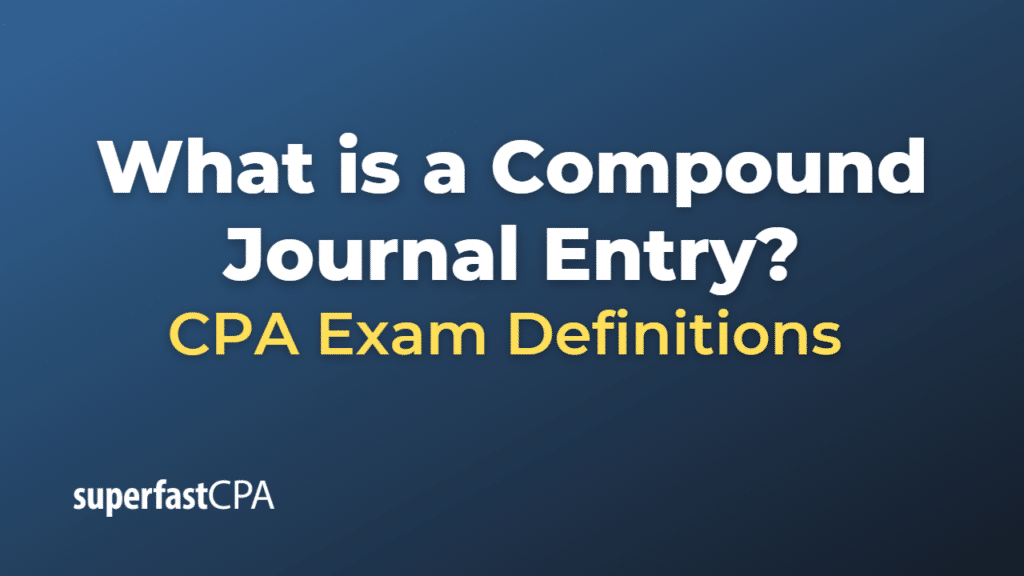Compound Journal Entry
A compound journal entry is a type of journal entry in accounting that involves multiple debits, credits, or both, affecting more than two accounts. This method is used to record complex transactions that involve several accounts in a single entry, simplifying the bookkeeping process and making it more efficient.
Compound journal entries are particularly useful for recording transactions that impact multiple related accounts simultaneously or for summarizing a series of related transactions in a single entry. They are commonly used in payroll accounting, sales and purchase transactions, and adjusting entries at the end of an accounting period.
Here’s an example of a compound journal entry:
Suppose a company purchases inventory worth $10,000 on credit, and the purchase is subject to a sales tax of 5%. The compound journal entry for this transaction would look like this:
- Debit Inventory (Asset) account: $10,000
- Debit Sales Tax Payable (Liability) account: $500 (5% of $10,000)
- Credit Accounts Payable (Liability) account: $10,500 (Total payable amount including sales tax)
In this example, the compound journal entry records the increase in the inventory and sales tax payable accounts (both debited), and the increase in the accounts payable account (credited) in a single entry. This simplifies the recording process and keeps the transaction details organized and easy to understand.
Example of a Compound Journal Entry
Let’s consider a hypothetical example of a company, ABC Corp, that sells products and needs to record a sales transaction involving multiple accounts. The following information is provided for this transaction:
- Product sale price: $5,000
- Cost of goods sold: $3,000
- Sales tax rate: 10%
Here’s how the compound journal entry for this sales transaction would look like:
- Debit Cash (Asset) account: $5,500 (Sale price + sales tax, i.e., $5,000 + $500)
- Credit Sales Revenue (Revenue) account: $5,000
- Credit Sales Tax Payable (Liability) account: $500 (10% of $5,000)
- Debit Cost of Goods Sold (Expense) account: $3,000
- Credit Inventory (Asset) account: $3,000
In this example, the compound journal entry records the cash received from the customer (debited), the sales revenue earned (credited), and the sales tax payable (credited) in the first part of the entry. The second part of the entry records the cost of goods sold (debited) and the decrease in inventory (credited). This compound entry efficiently captures the various aspects of the sales transaction in a single journal entry, making it easier to understand and manage.













